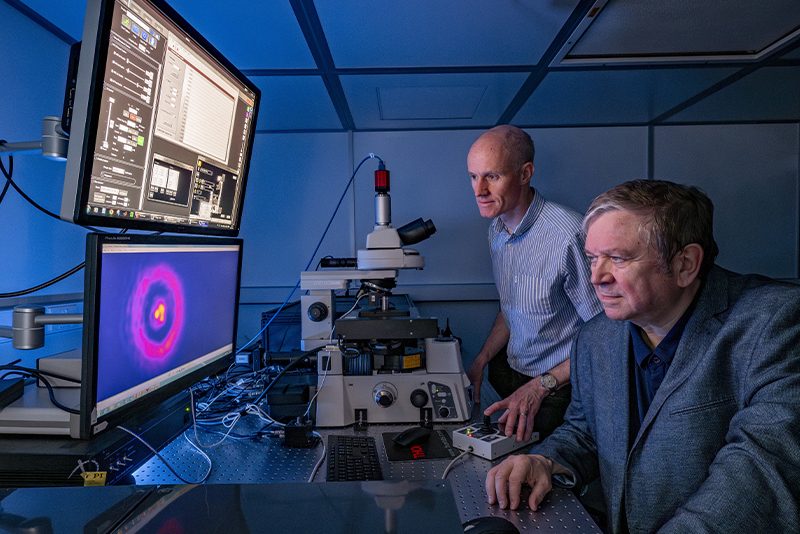
‘The Birth of Picophotonics:’ Pioneering a New Frontier in Research
Optica’s Optics & Photonics News (OPN) Magazine recently featured ground-breaking research from the Nanophotonics & Metamaterials Group at the Optoelectronics Research Centre (ORC). The group is led by Professor Nikolay Zheludev, one of the founding figures in the field.
Nanophotonics is concerned with the science of interactions between light and matter at the sub-micron scale. Over the past few decades, it has fundamentally impacted technologies including TV displays, medical diagnostics and treatments, and sensing. This OPN article explores the emergence of a new field: Picophotonics. Professor Kevin MacDonald, a member of the research group explained: “Picophotonics deals with light at a scale 1000 times smaller than the domain of nanophotonics. It is the science of light at the atomic scale. For context, the typical size of an atom is around two hundred picometres.”
Breakthroughs in understanding that light itself can be structured at picometre scales, that the optical properties of nanostructured materials can be changed by picometre-scale movements of their component parts, and that light can control such movement, have enabled scientists in the group to realize a new state of matter known as a ‘time crystal,’ which was only theoretically proposed a decade ago. Time crystals have structure that oscillates – is periodic – in time, in contrast to familiar solid-state crystals with structure that is periodic in space.
Kevin elaborated, stating: “This state, in a form close to the original concept, has been elusive in experiments until recently. At the ORC, we have achieved it in a classical photonic metamaterial.”
“Light-induced interactions between the structural elements of the metamaterial drive a transition from noisy, uncorrelated thermal fluctuations (c.f. Brownian motion) at the pico-scale, to synchronized periodic oscillation – to the time crystal state.”
He added: “This is just the beginning of an exciting new chapter in photonics research. We have shown how light can be used to probe and control phenomena at picometric scales, leading to practical time crystal materials. This opens a path to new understanding in fundamental optical physics and a plethora of new functionalities and applications to be explored in the years ahead.”